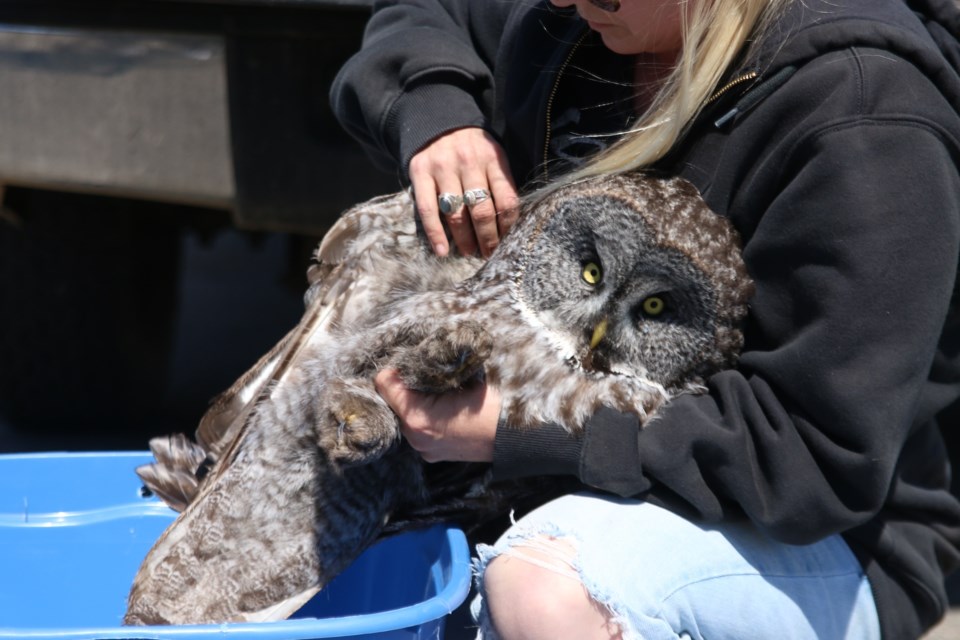THUNDER BAY — A local wildlife rescuer is hopeful an injured great grey owl's wing can be rehabilitated before the bird is returned to the woods near a remote community in the north.
“I am crossing my fingers and hoping the break is something that will be fixable,” said Jenn Salo, owner and founder of Thunderbird Wildlife Rescue. “We have a vet appointment right after this so fingers crossed we can save him.”
The owl touched down at the Thunder Bay International Airport Tuesday morning aboard a North Star Air flight from Webequie First Nation.
A crew of mine workers located the injured owl Monday night and contacted Salo who instructed them on how to safely capture it.
“The first thing I always ask people if they find injured wildlife is to please send pictures,” Salo said. “Especially if it is something not in Thunder Bay or remote. I want to be able to see the condition of the animal to be able to give accurate advice about what to do.”
After the owl arrived, Salo performed a brief examination of its right wing. There appeared to be two possible breaks, but Salo said luckily no bones were protruding from the wing, which is a positive sign.
The great grey owl is one of the largest owl species in the world - with a wingspan that can reach more than 150 centimetres.
Approximately half of all injured birds of prey Salo receives come from remote communities throughout the region.
And while owls are predatory and at the top of the food chain, it is usually run-ins with humans that result in severe injuries such as broken wings.
According to Salo, the leading cause of injuries for birds of prey right now are vehicle strikes on remote roadways.
“The majority of all the birds of prey we are getting in right now are males because momma’s on the nest and he’s working 10 times as hard to feed not only himself, but his young and his mate,” she said.
“So they are taking risks, they are hunting on roadways because that’s where it’s plentiful for mice and voles, so that is unfortunately where a lot of these birds are being hit.”
Luckily, this great grey owl will see a vet right away because Salo already had an appointment booked Wednesday afternoon for an injured saw-whet owl found earlier in the city of Thunder Bay.
The vet will determine the extent of the owl’s injury and if the break is not too bad or not in one of the wing’s joints. It will be rehabilitated at Thunderbird Wildlife Rescue and flown back to Webequie First Nation to be released.
Salo is also asking anyone who comes across an injured bird to contact her and, if possible, capture it safely.
“If there is somebody available, can you please capture and keep it safe until we can get there or arrange flights?” she said. “The more time that goes by and the animal is struggling, the more severe an injury becomes, the more they damage themselves.”
It’s also important to not use wire cages to capture birds, as it can injure them further. Plastic bins with adequate airflow work best.
More information can be found on the Thunderbird Wildlife Rescue Facebook page. There is also still time to purchase 50/50 tickets in support of the rescue, with the draw taking place later this week.
